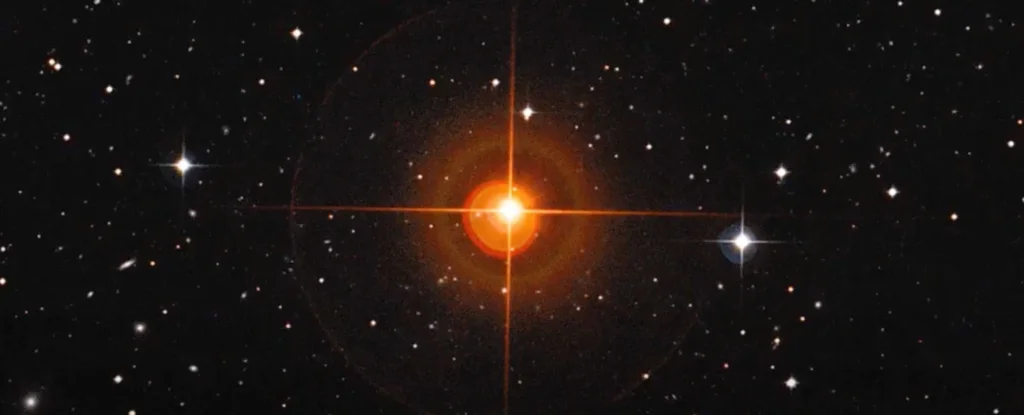Parasitic black holes can ‘eat’ stars from inside
- December 15, 2023
- 0
An unusual candidate for dark matter may be hiding inside stars and slowly eating them from the inside. A new paper led by astrophysicist Earl Bellinger of the
An unusual candidate for dark matter may be hiding inside stars and slowly eating them from the inside. A new paper led by astrophysicist Earl Bellinger of the

An unusual candidate for dark matter may be hiding inside stars and slowly eating them from the inside. A new paper led by astrophysicist Earl Bellinger of the Max Planck Institute for Astrophysics and Yale University suggests that small black holes formed at the dawn of time may have been incorporated into Sun-like stars and have been found in their cores ever since. It gradually absorbs material and turns it into a black hole.
All of this is, of course, highly hypothetical. But the research examines the effects of such parasitism on these stars and how we might recognize them in the universe if we encounter them.
“We found that such objects can be surprisingly long-lived, with the lightest black holes not affecting the evolution of stars, while more massive black holes absorb the star over time, producing a number of observable effects,” the researchers write in their paper. .
“The unique internal structure of stars that host black holes may allow asteroseismology to detect them, if they exist.”
The universe is full of black holes of various sizes. We have seen black holes of various stellar masses, probably formed by the collapse and merger of the core of a massive star at the end of its life. Lurking at the heart of every galaxy are supermassive monsters millions to billions of times the mass of the Sun. There are also intermediate-mass black holes that are hard to find but are appearing in increasing numbers.
What we haven’t found are really small black holes with masses similar to planets, moons, or asteroids. These objects do not have enough mass, and therefore gravity, to collapse into something as dense as a black hole.
However, theoretically, small black holes can form.
According to a theory developed by Stephen Hawking in the 1970s and expanded by other scientists since then, small black holes may have formed in the first seconds after the Big Bang, when matter in the universe was still hot and dense enough to form small particles. the extra density could collapse into inescapable points of space-time.
Where these ‘primordial’ vanishing black holes are – if they ever existed – is a mystery, but they would be a clear explanation for the extra gravity we attribute to dark matter in the universe.
Some scientists believe they could be inside neutron stars, sitting in the cores and devouring them like some strange cosmic monolith.
Bellinger and his colleagues wanted to investigate the possibility of an endoparasitic black hole existing in a living, fusion main-sequence star such as the Sun, rather than in the remnants of a dead star such as a neutron star. Hawking himself suggested that the Sun may contain a primitive black hole. Other scientists conducted a theoretical analysis and determined that the primordial black hole would swallow the star from the inside.
For their analysis, Bellinger and his team calculated what would happen to a star between 0.8 and 100 solar masses that formed around a primordial stellar-mass black hole. They also performed the first fully numerical evolutionary simulation of sun-like stars with primordial black holes lurking in their cores.
Researchers found that the smallest black holes would have difficulty growing. It would take billions of years for a black hole to swallow a star. But a black hole with the mass of a dwarf planet would be much greedier. It will begin to absorb the core of a Sun-like star and the material will form into a disk that will begin to rotate around it, producing enormous amounts of light and heat.
After a billion years, fusion will no longer fuel the star; Instead, this star will be powered by an accretion disk orbiting the black hole. Ironically, all of a star’s light can be produced by a black hole. Researchers named this hypothetical star type a Hawking star.
A Hawking star will behave like a normal star, with a few important differences. As expected when fusion begins to fade at the end of the Sun’s life, its outer layers will swell and become a red giant. However, the temperature will be lower than we would expect from such a star. It is interesting that we have already discovered anomalously cold stars – red giants – in the Milky Way. These are called red retards.
Researchers say we can examine these stars to find traces of the black hole’s engine. Black hole accretion is expected to produce acoustic patterns within a star that are distinct from fusion, which can be detected by the minimal change in brightness on the star’s surface. It is currently unknown what the changes in brightness look like; The researchers aim to address this issue in a future article.
“This makes it possible to detect such objects or place limits on their number and capture rate,” the researchers write.
“Implications for stars in more advanced stages of evolution, numerical results for stars of different masses and metallicities, and stellar population studies will also be examined in future studies.”
Source: Port Altele
As an experienced journalist and author, Mary has been reporting on the latest news and trends for over 5 years. With a passion for uncovering the stories behind the headlines, Mary has earned a reputation as a trusted voice in the world of journalism. Her writing style is insightful, engaging and thought-provoking, as she takes a deep dive into the most pressing issues of our time.